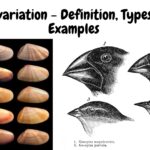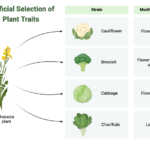Agricultural Microbiology 3 Views 1 Answers
Sourav PanLv 9July 24, 2025
What are the key enzymes involved in cellulose degradation, and how do they work together?
What are the key enzymes involved in cellulose degradation, and how do they work together?
Please login to save the post
Please login to submit an answer.
Sourav PanLv 9July 24, 2025
Cellulose degradation is a complex enzymatic reaction involving several types of enzymes, often acting synergistically:
- Cellulases (Glycoside Hydrolases – GHs): These are the primary enzymes that hydrolyze the β-1,4-glycosidic bonds in cellulose. They are typically classified into three major types:
- Endoglucanases (EGs) / Carboxymethylcellulases (CMCases): These enzymes randomly cleave internal β-1,4-glycosidic bonds in amorphous (disordered) regions of the cellulose chain. This reduces the polymer size, producing oligosaccharides and creating new chain ends.
- Exoglucanases / Cellobiohydrolases (CBHs): These enzymes cleave two to four units (primarily cellobiose) from the ends (reducing or non-reducing) of the cellulose chains exposed by endoglucanases. They are crucial for breaking down crystalline cellulose.
- β-Glucosidases (BGLs): These enzymes hydrolyze the cellobiose (a disaccharide) or short oligosaccharides produced by endo- and exoglucanases into individual glucose monomers. This final step is essential as cellobiose can inhibit the activity of other cellulases.
- Lytic Polysaccharide Monooxygenases (LPMOs) / Auxiliary Activities (AAs): A more recently discovered class of copper-dependent enzymes that perform oxidative cleavage of cellulose chains. They require electron donors and metal ions. LPMOs significantly enhance the accessibility of crystalline cellulose to hydrolytic cellulases, thereby “boosting” the overall degradation efficiency. They work in synergy with cellobiose dehydrogenases (CDHs).
- Accessory Enzymes:Hemicellulases (e.g., Xylanases, β-Mannanases): These enzymes degrade hemicellulose, which often encases cellulose fibers in plant cell walls. By breaking down this protective barrier, they increase the accessibility of cellulose to cellulases.
- Cellobiose Dehydrogenases (CDHs): These flavocytochrome enzymes oxidize cellobiose, generating reducing equivalents that can be used by LPMOs and preventing cellobiose inhibition of other cellulases. They can also produce reactive oxygen species that aid in degradation.
- Esterases (e.g., Feruloyl Esterases): These break down ester bonds that link hemicellulose and lignin, further loosening the lignocellulosic matrix.
This synergistic action is critical because of cellulose’s compact and recalcitrant structure, requiring a coordinated attack from multiple enzymes with different modes of action.
0
0 likes
- Share on Facebook
- Share on Twitter
- Share on LinkedIn
0 found this helpful out of 0 votes
Helpful: 0%
Helpful: 0%
Was this page helpful?




